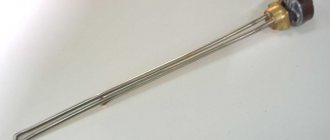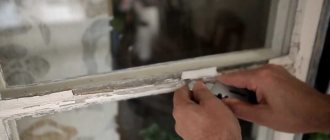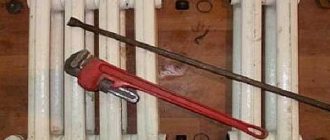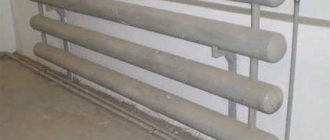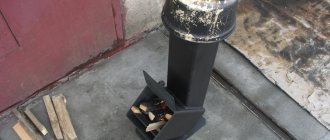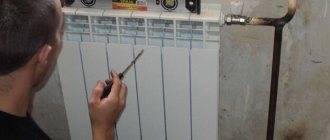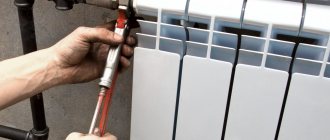Tuning allows you to change the appearance of the car. Radiator protection is usually modified. Making a radiator grill with your own hands is relatively simple. The main thing is to follow the sequence of actions. The same applies to tuning.
Positive points
There is a healthy grain in such improvement of the car, especially if in the summer you often move along the highway, from one city to another. The thing is that modern cars have large radiators (which can extend far down) and double grilles that are supposed to protect them. One is mounted between the headlights, but many manufacturers now build the second into the lower part of the bumper.
Grilles are supposed to protect - but they don’t! And why? This is because now they often carry purely design solutions; there is a large cell where not just a fly, but a really large stone from under the wheels of the car in front will fly.
All this can really cause damage to the surface of the radiator; it’s certainly difficult to break through, but it’s easy to get clogged with flies or fluff. And here the decision to fix the protective mesh is very justified, because all the insect fluff and other delights of our roads will settle on it. And you can easily wash it all off at the nearest sink.
Modern tuning options
The car owner has the right to independently carry out all kinds of updates to the radiator grille; the only thing he must take into account is the free circulation of air flow; the new body element should not reduce the capacity of the cooling system. It is not worth making a grille from a mesh that is too fine, with the size between the cells being less than 5x5 mm, since it will only be possible to ride on it at low speed. Moving at high speed increases resistance, causing air flow to the fan and radiator to become more difficult. Some types of tuning with their “bells and whistles” can completely or partially close the grille, blocking the flow of air, which is why the fan is forced to “breathe” through the lower part of the body. In this case, the efficiency of the cooling system will decrease several times.
Painting decorative elements
Not everyone will decide to create a new decorative element instead of the factory radiator grille. It will be easier to change its style by painting it. The new color will help “refresh” the appearance of the car. Painting the radiator grille yourself must comply with the rules for painting plastic; only a procedure carried out in several stages will help the paint adhere firmly. Even before starting work, the entire surface that is planned to be painted should be made matte, this is especially true if there are chrome-plated areas. Failure to follow such a simple technology will inevitably lead to paint peeling.
The prepared elements should be matted with sandpaper and soapy water - this helps to completely remove the chrome layer; Scotch Brite is suitable for cleaning hard-to-reach areas. A properly prepared structure will have an aluminum tint after cleaning. It should be washed in soapy water and wiped dry with any rag. Next, the surface must be degreased using a solvent. After complete evaporation of the substance, you can proceed to the next stage.
The future tuning radiator grille needs a primer; it is better to prime the plastic with a specialized Velcro substance. You can buy it in special cans. The primer should be applied in several layers; between approaches, you should allow 2–3 minutes for the previous layer to dry. It is preferable to do all procedures in daylight or high-quality artificial lighting - this will allow for uniform application.
https://youtube.com/watch?v=HTJ-JmXFGZY
Only after all of the above can you begin painting, which will be applied in several layers. After each coating you will have to take a significant pause, you will need at least 15–20 minutes
The dried paint should be carefully varnished, it is especially important to pay attention to the first application, which will ensure initial adhesion. The following layers can be made more dense, but smudges must be avoided. After drying the updated body element for about a day, it can be installed in its proper place
After drying the updated body element for about a day, it can be installed in its proper place.
Coloring
The mesh can be left in its original form, or it can be painted. This way you will give it an original look. Moreover, you can paint not only the mesh itself, but also the grille along with it. As you might guess, the mesh is painted before connecting to the grille, unless you want to make them the same color.
To do this, you need to thoroughly degrease the surface of the mesh. For better adhesion of paint and surface, apply a layer of primer. Choose primer depending on the type of material: different compositions are used for metal and plastic.
After this, you can safely start painting. To avoid cleaning paint stains from the garage floor, lay down unnecessary newspapers or an old rag. The easiest way to paint is using an aerosol can. Keep it 40–45 cm from the surface. Apply 2 thin coats. Give each one about an hour to dry. Make sure that no sagging occurs. If desired, you can coat the mesh with the grille with an additional layer of varnish.
Lay newspapers or fabric under the mesh and then apply spray paint
As you can see, there is nothing complicated in making a protective mesh for the radiator grill yourself, as well as subsequent installation. All the necessary materials and tools can be purchased at any construction supermarket or automotive parts store without any special expenses. Speaking of costs: making a mesh with your own hands is several times cheaper than buying a ready-made one. You will only need a little time and effort to give it the desired shape and install it in its place.
Radiator grille tuning
There are many ready-made kits on sale for tuning grilles of specific car models. The advantage of their use is standard sizes and fasteners. You just need to remove the old part, install a new one - the result is achieved.
Tuned radiator grill of a VW Golf car
Branded radiator grille tuning kits can be quite expensive. A budget-friendly way to improve the appearance of your car is to do the tuning yourself. Let's look at the main options for tuning radiator grilles.
Installation of a decorative radiator grille
Perhaps one of the most common tuning methods is decorative mesh. This is a metal mesh that is sewn onto the inner surface of the radiator grille. You can do this kind of grille tuning yourself.
To mount a decorative radiator grille yourself, you need to:
- Remove the radiator grille, clean it of dirt and dust;
- Cut the “mesh-grid” according to the dimensions of the radiator;
- Secure the decorative grille. For this, self-tapping screws with a wide head are usually used; with a careful approach, ordinary construction ties are also suitable;
- Install the radiator grille.
Covering the radiator grille with film
Tuning the appearance of the grille can be done by covering it with decorative film. This is a relatively cheap way to restore the appearance or tuning. The market offers a wide selection of films to suit every taste and budget. The film can be decorative or transparent (transparent protects against damage).
It's easy to apply the film. To do this, you need to degrease the surface of the grate, and, heating the film with a hairdryer, “stick” it, and then expel the air. Covering complex surfaces with film will require skill, so it is better to turn to specialists.
Radiator grille covered with carbon film
Immersion printing on radiator grilles
A good way to protect the grille surface and give it a unique texture is by immersion printing (hydroprinting). The technology for applying such a coating is as follows. A special film with a pattern is placed on the surface of the water. Then a solvent is sprayed on top, the film loses its integrity and turns into a liquid, viscous state, without losing its texture. The prepared part is dipped into a container and the coloring film envelops its surface. Next, the part is washed and dried. Coatings applied in this way perfectly protect the grille from corrosion and physical damage.
Radiator grilles painted using hydrographic printing
Radiator grilles painted using hydrographic printing
Painting radiator grilles
Radiator grilles can be restored by painting. To apply the coating, careful preparation of the surfaces to be painted will be required. After cleaning and degreasing the grille, it is necessary to apply a primer. The soil is selected depending on the type of material from which the part is made. The paint is then applied to the grille using pressure spraying. To obtain a high-quality coating, several layers of paint and varnish are applied. For such work, you will need a room with controlled humidity and temperature.
Radiator grille before and after painting
Chrome plating of radiator grilles
The first method is galvanic application of chromium. The part is immersed in a bath with a special solution - an electrolyte, which contains chromium elements. A direct current is passed through the part, which provides conditions for galvanic deposition of metals, and chrome plating occurs.
Galvanic chromium plating workshop
Chrome grille
Less expensive and complex is the method of chemical metallization. The part is primed, then the chemical components of the coating are applied step by step by spraying. Chemical metallization increases the strength of parts. In some cases, this method makes it possible to process plastic parts.
Primer and chemical metallization of the radiator grille
Primer and chemical metallization of the radiator grille
The radiator grille is the most important part that defines the appearance of the front end of the car, so car manufacturers carefully develop its design. However, if you want to stand out from the crowd or simply improve the appearance of the car, the grille can be repainted, chromed, or covered with film.
How to install the product
Before you begin installing the mesh, you will need to remove the grille. On some cars this can only be done together with the bumper. As a rule, to dismantle you need to unscrew the retaining bolts that are hidden under the hood, and then bend the clamps at the bottom of the grille. After this, it can be carefully removed from its place. For other models, the fastening is so simple that you don’t even have to lift the hood lid: just pry the edges of the grille with a flat screwdriver and remove it from the grooves. You can find more detailed instructions in your vehicle's owner's manual.
Required Tools
To install the protection on the grille, prepare the following set of tools:
- ready-made protective mesh
- flathead screwdriver;
- a set of hex keys for dismantling the grille;
You will need these tools regardless of your preferred mounting method. But besides them, you will need the fasteners themselves. Depending on how you connect the mesh to the grating, you will need one of the following tools:
- standard holders
- cable ties about 18–20 cm long
- screws and industrial hair dryer
- welding machine.
Mounting options
You can secure the mesh in four different ways:
- using standard holders;
- using cable ties;
- using self-tapping screws;
- fusing the stacks into the lattice.
Each of these methods has its own pros and cons. For example, the best option is to install it on standard clamps. Another option is to install the mesh on self-tapping screws. True, before this you will need to heat the screws and thereby prevent further cracking.
Rare motorists resort to the fusion method. Firstly, you need to have special equipment. Secondly, if the grate is made of plastic, it can easily be melted. Well, in the end, you can’t redo a crookedly fused grille, and the entire part will need to be replaced.
For these reasons, drivers who decide to modernize the radiator grill on their own most often use plastic construction clamps. They are low cost and available at any hardware store. To make the ties invisible, purchase them in the color of the future grille and mesh.
Installation instructions
When the mesh itself is ready and the installation method has been selected, you can begin the installation process.
- Carefully remove the radiator grille. Be careful not to damage the cells.
- Wash the parts and remove any debris that has accumulated during use.
- Apply the mesh to the outside or inside of the radiator depending on the final location.
- If you are installing the mesh outside, fold in the seam allowance at the edges.
- Secure the mesh to the grill with clamps. It is best to use a symmetrical circuit. The ties arranged in a checkerboard pattern look beautiful and hold tightly.
- Cut off the long tails of the zip ties. Make sure that the fastening is not broken and the clamp does not fly off.
- Place the grille back into the car.
Connect the mesh and radiator grille strictly along the contours
Dimensions, shape, material of the radiator grille
Each car manufacturer has its own size, shape and material for making the grille. Many use plastic, some use metal to create gratings, and there are also combined gratings - made of plastic and metal. The dimensions largely depend on the dimensions of the front part and the layout of all its elements. Manufacturers often coat the radiator grille or some of its parts with chrome, disguising the plastic material of the grille as metal.
For example, on the latest generation Ford Focus the radiator grille is very small and serves almost only a decorative function, since volumetric air intakes installed on the front bumper are used to cool the radiator.
Ford Focus radiator grille
But on the latest generation Toyota Land Cruiser 200 SUV, the radiator grille is very voluminous and it performs both a protective, decorative, and aerodynamic function, since it does not have air intakes on the bumper.
Volumetric radiator grille Toyota Land Cruiser 200
Many manufacturers, in pursuit of an aesthetic appearance of the front end, forget about the direct purpose of the radiator grille - protecting the radiator. They make a grid with very large cells or with a significant distance between the grid strips. Such a lattice cannot always “catch” a flying stone. Many car enthusiasts solve this problem by either replacing the grille or installing a fine mesh from the inside of the factory grille.
It should be noted that in addition to the improved appearance and protection of the radiator, tuning radiator grilles can also provide other useful functions. For example, there are grilles into which additional lights are integrated. These lights connect to the wiring that goes to the headlights.
Some craftsmen create exclusive radiator grilles using the factory grille as a basis. Typically, the outer contour of the factory grille remains, which makes it easier to install it in place in the future, but the inner part is cut out. A grille with a special pattern is mounted in place of the cut out part; it is also possible to install additional lights. Next, the finished grille is painted or chromed, and then installed in place.
The ability to dismantle the radiator grill makes it possible to replace it if damaged. But many people use this opportunity to give the car individuality, since there are now many types of grilles on sale, which look very different from the factory ones.
You can also change the appearance of the front of the car not only by replacing the grille, but also by purchasing linings for it. Moreover, grille covers can be not only decorative, but also perform a specific function. Nowadays, winter grille covers are sold for almost all cars. This cover completely covers the grille, blocking the air flow through it. In winter, this contributes to faster heating of the power plant and compliance with the temperature regime.
Radiator grille trim
Manufacturing and installation
Now, you need to take a fine mesh and fold it in half, so that the edge fits under the edge and it folds more tightly. The edges of the galvanized mesh are incredibly sharp and tenacious, so protect your hands with gloves. After the mesh is folded as tightly as possible, we temporarily fix it with ties in the four corners. Next, we put the same layout on this grid and cut out the future grid. The most convenient way to cut such a mesh is with metal scissors.
The second step is to place the mesh on the frame. To use as a base, a mesh with larger cells will serve. According to the layout, you should cut out the desired outline from it. Then we place a piece of fine-mesh mesh on top of it, and align the edges so that they match perfectly. If you use a model when cutting out parts, be careful and attentive, then all three parts will be the same size and, when placed on top of each other, will give a smooth, perfect, three-layer edge. If everything is correct, we fix our parts in this position, tightly tightening them together with ties
It is important to place the ties in compliance with a certain pattern - either in a checkerboard pattern, or every even row, with distances of three cells. The accuracy of geometric shapes is always fascinating and after final decoration, the view will be even more transformed
Our hand-made mesh for the radiator grille turned out to be much stronger than the factory one and much denser, however, it is perfectly ventilated and does not create any obstacles to the air flow. Now you need to process the edges of the finished lattice. To do this, we take the car door seal, and carefully, slowly - so as not to tear it by accidentally catching on the sharp edge of the mesh, “put it on” it. Starting from the bottom right corner, millimeter by millimeter, it isolates the sharp edges of the grille edge, plunging them into the depth of the seal. Having completed a full circle, we will return to the starting point, now we can trim off the excess.
In fact, the grille is already ready for use, but it would be nice to give it a more presentable look. Tuning the radiator grille with your own hands is also a completely feasible task, and you need very little to do it. First of all, you should cut off all the hanging “tails” of the ties - not remove them completely, but rather cut off the excess, hanging part. Now place the grid on a clean sheet of paper, face up. Shake the can of paint well and start painting.
First, standing on the right, then, after waiting a little (an hour or an hour and a half), standing on the left of the grate. Such a coloring that “crosses” the directions of the jet will more thoroughly cover the entire surface of the craft.
If you approach the question of how to make a radiator grill with your own hands, you can get a high-quality and reliable grille within just a few hours.
Benefits of using decorative elements
Similar decorative elements are used for batteries for several reasons:
- Improving the aesthetic properties of the room. For example, creating a beautiful accent in a room.
- Protective function against touching a hot battery. This is especially true if there are small children.
- Simplifies the maintenance of radiators.
A multifunctional screen can be made in several versions:
- Flat - protects the battery located in a niche.
- A closed box is used when it is necessary to close the entire radiator.
- The hinged cover is designed to cover the radiator protruding from the window sill.
Getting started: removing the factory radiator element
Usually the grille is held on by self-tapping screws or bolts screwed into specialized holes in the body. Recently, fastenings have increasingly been replaced by neat plastic latches. In order not to damage the car and its other elements, you should first look at the car’s maintenance manual. However, if it is not there, you can figure it out yourself; usually dismantling it takes about 20 minutes.
To remove the grille, you need to unscrew the screws that secure it to the car.
Screen manufacturing materials
When selecting grids for batteries, the type of material is taken into account. Not all types of such structures effectively absorb heat
You should pay attention to such a parameter as thermal conductivity. In addition, other properties are studied: radiator heating temperature; exposure to temperature changes
Considering that this design is regularly exposed to heat, it is recommended to purchase environmentally friendly products. This is due to the ability of some materials to release harmful compounds into the environment.
Metal gratings
Products in this group are presented in different types: simpler, classic, carved. Metal grilles are installed on heating radiators quite often due to the good heat transfer of the material. This allows them to conduct heat without affecting the efficiency of the battery and the entire system.
Metal structures are easy to clean. It is permissible to paint them repeatedly, changing the shade. The front panel can be mesh or perforated. Moreover, the shape of the holes changes depending on the wishes of the customer. The advantage of such products is long service life and durability. To prevent the structure from injuring residents, it is attached to the wall.
The metal is heat resistant. It is resistant to temperature changes and can heat up and cool down repeatedly. Products made from such material are classified as mid-price products. It is recommended to use structures with a metal thickness of 1 mm. This is enough to ensure good thermal conductivity of the screen. Moreover, in terms of strength, such products are not inferior to analogues made from other materials. The disadvantage is the difficulty of self-installation, since it uses a welding method.
Wooden gratings
This is an environmentally friendly material. When heated, it does not emit harmful substances. Wooden grilles for heating radiators will fit well into any interior. They are represented by a wide range of models. More often, lattice screens that are simple in design are used. Wooden products are not strong enough, so it is recommended to use the option with shelves, which in this case will serve as stiffeners.
Wood is a heat-resistant material, however, with prolonged contact with a source of high temperatures, such structures can dry out. However, this does not lead to immediate deformation of the products. To prevent the shape of such grilles from changing, they should not be installed close to the battery. The advantage is the ability to change the color of the structure when the design and color scheme of the interior changes. The main disadvantage of wood products is their high cost.
Plastic covers for radiators
PVC gratings are made from polymer material in whole or in part. In the second case, plastic can be successfully combined with metal and rattan. The advantage is the ability to decorate with any texture: wood, natural stone. Plastic grilles are cheaper than their metal and wooden counterparts.
Such designs are lightweight and easy to maintain. They do not absorb moisture, do not deform when exposed to moderate temperatures, and do not emit toxic substances. However, all these properties of the material are preserved provided there is no direct contact of the plastic with the heat source.
The main disadvantage of PVC products is low thermal conductivity. Under other conditions, this property could be an advantage, however, if there is no goal to reduce heat loss, then low thermal conductivity causes delay in warm air flows. This reduces the efficiency of batteries and leads to excessive fuel consumption.
Glass screens
They are durable because they are made of tempered glass up to 8 mm thick. This prevents damage due to mechanical stress. Such screens are attractive and fit well into interiors of various styles thanks to their minimalist design.
Glass grilles for heating radiators differ in size, color and material thickness. The fasteners are installed on the corner areas of the screen. The disadvantage of such products is the lack of holes. Heat is dissipated from 3 sides: from the battery up and to the sides. This contributes to a decrease in the efficiency of the heating system.
It is easy to care for glass structures. They are not afraid of moisture, they are smooth, due to which dirt is retained in minimal quantities on the surface of the panel. In addition, a photograph, any drawing, or pattern can be printed on the glass screen.
Battery screen design
Over the years, canvases that hide radiators have become a stylish addition to interiors. There are various ways to turn a screen into a real decoration. First of all, this concerns wooden products, which are often complemented with carved elements in classic interiors. Fine carvings add some lightness and sophistication to the decor. Canvases matched to the color of the furniture look good. Glass screens are endowed with special decorative properties, which can be supplemented in the following ways:
— Photo printing – will decorate the canvas with magnificent landscapes, city panoramas and any other images at the request of the customer;
— Handmade drawings are quite an expensive pleasure, but the end result is worth it. This method of decorating a screen involves the artist applying a picture with silicate paints. The stained glass is then fired in a special oven;
— Sandblasting with the addition of paints allows you to create a wide variety of patterns;
— Decorating with lead self-adhesive film is an expensive type of screen decoration. Its cost is explained by the high cost of raw materials, but the drawings have a rich colorful palette.
Beautiful stained glass designs are created using the bevel method. This is a rather complex technology, during which individual glass elements are first cut, then coated with a special glue and mounted to a metal profile. Completely unique screens are made using rhinestones that can imitate the cutting of precious materials.
If you are planning to decorate the battery screen yourself, you can do this by simply painting it, for example, to match the color of the interior. You can apply an original drawing in the form of a piano. For work you will need white and black paints. The image needs to be carefully thought out in advance so that the keys are located realistically in the correct sequence.
Another interesting technique - decoupage - will give the panels some chic. To do this, you need to purchase multi-layer napkins with a pattern. Then everything is simple: the screen needs to be washed and dried (can be painted). The top layer of the napkin is separated, applied to the surface of the canvas and thoroughly coated with a layer of PVA glue. At the same time, it is necessary to remove air bubbles. Once the applique is completely dry, it can be varnished to extend the durability of the design.
Anti-mosquito nets
Another convenient device for protecting the radiator from small debris and insects is a mosquito net, which can be installed in two ways:
Mounted in front of the radiator (behind the inside of the standard protective grille). To install such a device, it is necessary to dismantle the standard protective grille.
They are fixed externally to the car radiator grill using special harnesses and hooks. This device is very convenient to use as temporary radiator protection during long trips on the highway or in forested areas. It can be quickly installed and removed.
Anti-mosquito devices are made from elastic mesh material with small cells. The main advantages of these products are:
- versatility (can be installed on almost all brands of cars);
- low cost;
- ease of installation/disassembly and subsequent cleaning/washing.
Glass screens for heating radiators
Glass screens keep unsightly batteries out of sight. For their manufacture, tempered glass with a thickness of 8 mm is used: it is almost impossible to break it. To ensure that the edges of the product are strong and safe, they are subject to additional polishing. The glass surface is coated with a special protective substance, which makes it possible to care for it during operation using ordinary detergents.
When using glass decorative screens, there is no significant reduction in the heat transfer of the battery. Convection in this case occurs through the movement of cold air from below the radiator: when heated, it freely rises to the top and enters the room. It is very easy to remove such a screen: in addition, it transmits sunlight perfectly. A type of glass decorative elements are acrylic overlays: they are an order of magnitude thinner (2.5 mm) and lighter than conventional products. Acrylic glass is characterized by a wide range of colors and flexibility in processing.
Glass protection for radiators has the following advantages:
- High level of heat transfer.
- The ability to give a modern look to even the oldest battery.
- A variety of methods can be used to decorate a glass surface - photo printing, painting, deep etching, tinting, satin finishing.
It is possible to individually order the production of a decorative glass screen, taking into account the interior of the room. This is very convenient for lovers of a particular design style. Glass surfaces can be decorated with flowers, city landscapes, portraits, images of animals, etc. They are transparent, matte, and plain. Illumination using LED strips looks especially original.
To install decorative glass screens, wall or floor mounting can be used. During use, they can be additionally decorated with photo printing, which allows you to quickly add something new to the interior. To give the screen any required configuration, bending technology is used: thus the battery acquires a truly unique appearance. The cost of glass radiator screens can vary: this is directly influenced by the size of the structure, the thickness of the glass used, the complexity of applying images, transportation and installation.
Advantages
If you are interested in small tuning, but do not want serious innovations, just install a new grille. Your old bumper will only benefit from this.
Considering the current assortment, you can literally buy whatever you want. On Avito and other sites they sell factory-made elements, handmade decorative overlays, so to speak. You can just slap on a little molding and it's done. It’s up to you to decide, since a new grille is not that expensive. Much depends on the material of manufacture, but more on that later.
Speaking of strengths, I am a proponent of buying or DIYing a new grille for several reasons.
- Availability. The price of parts for tuning the grille is low. Moreover, on Kia, Chevrolet Orlando, Lacetti, Renault Duster, Mazda, Lancer 10, Skoda and a number of other cars, the prices are equally good. You don’t have to spend a lot of money to have your VAZ 2105, Nissan X-Trail T31, Lifan x60, Chevrolet Cruze, Priora, Granta or the same UAZ Patriot transformed and sparkle with new colors.
- Installation methods. If you don't even know anything about removing the bumper and are worried about the risks of damaging the heating system when working near the radiator, the replacement can be done by specialists. St. Petersburg, Moscow and almost every city in the country has at least 1 car service center where they are ready to do everything for you efficiently and quickly. You can buy a tuning element and entrust its installation to specialists. Or put the work entirely on the shoulders of the masters. Many workshops are ready to make or order everything you need. It costs more, but you have a minimum of worries. Or do it yourself. Not the worst option either.
- External changes. Installing even a small grille instead of the factory one gives the car a completely different sound. A regular trim or a black grille with original cells perfectly changes the appearance of the car.
- Range. We are talking about both the design and the materials used to create the radiator grilles. Chrome, plastic, aluminum, stainless steel and other materials will allow you to get what you need.
As you can see, there are a number of reasons to start removing the old grille and installing a new original element in its place. Sometimes after such mini-tuning the car immediately looks like new. It can be a slant towards sport, elegance or brutality. It's up to you to decide.
Tips and tricks
Properly installed foil material behind the radiator will definitely increase heat transfer. To decorate the device in a children's room or bedroom, it is better to use lattices made of natural bases. For example, it is worth considering wooden or MDF options. A good solution would be to make your own structure from old furniture.
It is important to understand that the main types of batteries emit two types of heat:
- radiant;
- convective.
The first option refers to the type of direct infrared rays. Low-temperature media produce zero levels of this energy. However, when the battery temperature is above 60 degrees, the value of radiant energy cannot be discounted - it is this part of the heat that is lost when installing radiator grilles.
Screen grilles also degrade the converter component. However, the right choice of decor option can reduce losses to zero.
An alternative way to decorate batteries looks great - decorating with paints: you can apply a design to the radiators using oil watercolors. To create the image of a 3D part, patterns are applied not only to the radiator itself, but also to the wall.
As a result of creating such a work of art, the front part of the radiator battery (for example, cast iron) and the vertical parts conventionally represent one plane.
The selected version of the radiator grille should not only be beautiful and reliable, but also easy to disassemble. Repairing or replacing a heating device should not be complicated by installing a radiator grille. Radiator protection looks interesting when it is in harmony with the general appearance of the interior - this design should not stand out against the background of the general environment.
It is undesirable to clutter the decorative screen with furniture, since in this case not only the heat exchange regime will be disrupted, but also the beauty of the decor will go unnoticed. The screen, in particular its façade, must have perforations - the holes will ensure the best air circulation.
Installing a grill requires compliance with certain standards. For example, the permissible minimum distance from the radiator should be 3 cm. You need to add 10 cm in width, and about five cm in height. Thus, the grille for a standard radiator (80 cm high and 200 cm long) will have dimensions of 85x220 cm. If side parts are provided, their width should not be less than 30-40 cm.
Of the presented products with standard parameters, a metal product 900x2000 mm or a wooden analogue with identical dimensions, but with a slightly higher price, can be considered a suitable option.
To learn how to assemble a decorative screen for a radiator, see the following video.
What are radiator grilles made of?
The list of materials that are used to make structures is large, it can be plastic, wood, metal, MDF, glass, wood. The choice of radiator grilles is limited by design, color scheme, functionality and cost of the product.
Plastic radiator grille
This is the cheapest type. You can choose plastic radiator grilles for heating of different colors and dimensions. The price of such a product is low, but it can imitate almost all known decorative surfaces. It is better to use plastic screens in non-residential premises, since when heated they can release substances hazardous to humans.
Wooden radiator grille
This type is one of the most purchased. The main reason why wooden radiator grilles are chosen is the environmental friendliness of the material. A battery screen made of wood cannot be cheap. Special impregnations and treatments against dampness and drying out, difficulties in manufacturing - all this increases the cost of products. The thermal conductivity of wooden battens is low, so it is better to install them in houses where the microclimate is very warm.
In small rooms, such grilles often perform not only a decorative function, but also take on the role of missing furniture. For example, a table under the window. The sheathing, made of an expensive type of wood (oak, ash), can be made in the form of rattan or wicker and be a real work of art.
MDF radiator grille
Products made from this material are durable. They are not subject to swelling or drying out. An MDF radiator screen is more environmentally friendly than plastic, but of lower quality than wooden screens. In appearance, such structures are not much different from natural wood, but when heated, they can release vapors of glue used for pressing sawdust.
Metal radiator grille
The most practical are structures made of metal. The façade of this grille is perforated for better air circulation. The main advantage of such gratings is their high thermal conductivity. This means that such a grille will release maximum heat into the room. In terms of thermal conductivity, metal panels occupy first place among other types.
The inner surface of the metal grilles is specially painted black to further increase the level of thermal radiation. The advantage of such a screen is that it does not emit harmful substances when heated, like an MDF grille, and does not deform like a wooden screen. Forged metal grilles for heating radiators are now widespread.
Glass radiator grille
Recently, tempered glass products have become increasingly widespread. So far, these are the most expensive heating grilles on the market today. Such screens are made to order and are designed in various decorative styles. Modern technologies make it possible to apply all kinds of images, engravings, etc. to the surface of such screens.
Glass screens
Glass screens are usually a rectangular sheet of thick translucent glass on steel holders. It covers the radiator only from the front, leaving free space below and above.
In the author’s humble opinion, this design combines a very attractive appearance with a set of extremely useful practical qualities:
- The screen practically does not limit convection. Cold air enters the heating device from below, and hot air freely rises from above.
- If necessary, the screen can be removed without much difficulty. Not as easy as plastic or steel, but removing the glass from the holders is not difficult.
- Glass is permeable to thermal radiation. Do you remember how warm it is on a summer day near a sunny window?
Important: installation instructions boil down to the correct selection of the screen size and the height at which it is mounted. Both below and above the screen there must be gaps of at least 10 centimeters
Here, a glass shelf was installed above the screen in an attempt to perfect the aesthetics. The result is again a sharp drop in heat transfer.
What to look for when choosing
The most important thing is to understand the simple truth that installing any type of panel on a radiator leads to a decrease in heat transfer from it. At best it will be 5%. But if you choose a blind grille with a minimum of holes, the percentage of leaks can increase significantly.
It doesn’t sound like much, but during the heating season, heat meters can come with a serious surcharge. Therefore, the screen should have as many slits as possible so that hot air can flow freely.
To smooth this out and increase heat transfer, you need to hang a heat-reflecting foil screen on the wall behind the radiator on the wall. The heat will be reflected from it into the heated room, instead of heating the wall unnecessarily.
Another way to reduce heat loss is to paint the inside surface of the decorative panel black. In this case, the screen will absorb more heat from the radiator and release more heat into the room.
The structure should be easy to disassemble and disassemble. In summer it will be necessary to flush the radiators and drain the water. Constantly dismantling furniture will only bring additional hassle and inconvenience. In addition, the battery valves must remain easily accessible.
The easiest way is to make a screen for the heating radiator with your own hands from MDF. To do this, you will need to demolish a rectangular box the size of the radiator made of bars or chipboard and cover it with a decorative MDF plate. Holes of various shapes and colors are available for sale. In addition, you can order cutting of MDF panels on a programmable machine according to an individual sketch.
Stages of work
- Cut the workpieces to size. When measuring the dimensions of the battery, you need to add at least 3-8 cm on each side for air exchange.
- The joints of the parts must be processed at an angle of 45 degrees for a tight fit.
- Cut the sheet mesh according to the specified parameters.
- Connect the facade and sides with a metal mesh. You can attach it using a construction stapler from the wrong side of the frame. Small nails are also suitable for joining.
- Assemble the box using corners and screws.
- Install a metal sheet at the back of the radiator to increase heat transfer. Instead of a sheet, cardboard covered with foil can be used.
- Attach the legs to the bottom of the box. Adjustable models allow for more precise installation.
- Place the box to the battery. Attach the sides to the wall using metal corners and screws. Fasteners should be hidden, like hanging shelves. You don’t have to fasten the structure, as the legs provide sufficient stability.
- Fiberboard parts are painted, covered with wallpaper to match the walls or using self-adhesive.
The metal mesh can be replaced with a perforated MDF panel, plywood with a pattern cut out, or wicker rattan.
Do it yourself
Even though you know the catalog number of the grille that would fit your car, I suggest we talk about tuning it yourself. Still, it is much easier to install a finished element and wipe the icon with polish than to cut, glue and saw yourself.
Let's look at the process step by step. The front of the car will be pleasantly pleasing to the eye, and the knowledge that you did everything with your own hands will lift your spirits even more.
- In order for the new mesh to fall into place, it must be released. To do this, remove the factory radiator grille. Usually it is held on by plastic clips, so there should be no problems with how to remove the element;
- Be careful that there are no wires or hoses trailing behind the grille. Cars are different, so anything is possible. Try to avoid damage to the old frame. This is where your new grille will be mounted;
- After removal, the inner part is cut out with a hacksaw. The task is to remove everything unnecessary so that the new element fits perfectly. It depends on what size the new part will be;
- Be sure to clean everything and sand it thoroughly. It is better to fill all excess holes with fiberglass or automotive putty;
- You can use an old frame or buy a new one. In the second case, everything is clear. If you rework an old part, you can paint it or wrap it in vinyl. By painting you will be able to chrome the part, that is, give it the appearance of real chrome. Or carbon. As you wish;
- The new mesh is cut based on the dimensions of the frame. It is fixed with clamps and screws for reliability. The modified radiator grille is placed in its rightful place.
Do not forget that the radiator grille has not only a decorative, but also a protective and functional task. It prevents large debris from reaching the radiator, plus it provides air supply to cool the engine. Therefore, under no circumstances make the new grate solid or too fine-mesh. There must be good air flow to the motor, otherwise there will be problems with overheating.
In some cases, it is really worth considering not just replacing the grille, but replacing the entire front bumper. It's more expensive, but not more difficult. You just need to remove the old bumper and install a new one in its place. The main thing is that the part and the car match in size, and there is no need to drill, weld or cut anything. Although many are ready for this for the sake of tuning.
Kinds
So, let's tune our car? Then you need to choose a suitable new grille for yourself. The easiest way is to buy it specifically for your car. It is enough to know the article number and choose the color that matches your car.
Moreover, the finished grille may already have an emblem or badge that you like. That is, it is not necessary to save the badge of your car. You can literally stick anything on there.
The most important point is the material from which the upper and lower grilles are made. It could be:
- aluminum;
- plastic;
- stainless steel;
- carbon
Aluminum parts are the most expensive, while plastic is considered a budget option. Stainless steel can be called something in between.
Many people choose carbon. You will have to spend more money on it, but even in the photo the car with a carbon grille looks great. In fact, it's even better.
Why did I need a radiator mesh?
I know, I know: all modern cars are produced without any nets. Evil tongues say: if it’s not, then it’s not necessary. But I don’t agree with this: after all, the same dealers like to offer “unnecessary” grids as an option - for a fee. And if so, then the car manufacturer does not object to such modifications.
Why do you need a mesh? Have you ever had to wash your windshield after a long drive? Neither wipers, nor oncoming air flow, nor heavy rain protect it from adhering flies and mosquitoes, tree buds and fluff particles. And the radiator, invisible to the eye, meekly takes on all this dirt - and no rainfall can clean it. The poplar tribe is especially trying, capable of filling all its cells with its “cotton wool”.
A separate torture for the radiator is pebbles and other hard objects flying towards you, with which our roads are littered in sufficient quantities. We shudder when such an object hits the glass, but we don’t think about what the radiator feels like during such impacts. And when winter comes, various road reagents begin to attack the radiator, ready to devour anything.
In short, I need the mesh in order to think less about repairs to the cooling system. I want my car to drive and not sit on lifts.
Chrome radiator protection
The chrome trim on the radiator grille will help give the old design an attractive metallic-mirror shine. To do this, you need to carry out a series of difficult steps, as a result of which a binder will be applied to the surface, which should be dried at a temperature of at least 65 degrees. A spray gun will help apply a layer of CT activator. 2516. Distilled water will rinse the grate, a double gun will apply “Metachrome” with a reducing agent.
All these complex operations can be avoided by purchasing a radiator grill cover in advance from any car store, perhaps even an online store, with the help of which the difficult process of adding shine will turn into a pleasant pastime.
The principle of heating a room
Metal screens for radiators
Decor is the main function of radiator grilles. But radiators are used to heat the home, so there should be no obstacles in the way. Even the thinnest screens reduce heat transfer, so you should choose products with a low percentage of absorbed heat in advance.
Air should enter the radiator from below, pass along it, heat up and go to the top. This system will heat the room. Therefore, when choosing a grill for the battery, you need to make sure that there is a small gap at the bottom and that there is no cover at the top. It is possible that the top cover has a large perforation area.
Many modern decorative radiator grilles reduce heat transfer by more than 20%. Screens in the form of boxes made of solid wood lose a particularly large percentage of heat. Models with a minimum number of holes and a small perforation area will be ineffective in operation.
The screen additionally protects the radiator from dirt. Dust particles settle on a hot battery and decompose under the influence of high temperature. As a result, the surrounding atmosphere becomes polluted with decomposition products, which harms the health of people, especially allergy sufferers and asthmatics. When installing the grille, the accumulation of dust on the radiators is significantly reduced. Periodically you need to clean the screen with a cloth or vacuum cleaner.
How to choose a model taking into account the rules of heating engineering
In order not to make a mistake when choosing or manufacturing a grille or screen, you need to take into account some points. Especially for its readers, the editors of Seti.guru have collected the best ideas for preserving heat using decorative radiator grilles:
- To make the screen better “hold” heat and heat up, the back of the battery can be painted a dark color.
- The space behind the radiator battery can be covered with a special reflective film, which will provide stronger heating.
Battery with reflective screen made of isolon - It is better to choose a box or radiator grille with perforations on the top panel.
Metal battery with perforation - The distance between the slats in the front panel directly affects the percentage of heat transfer; the larger they are, the more efficient the heating is.
- It is better to choose designs equipped with an aerodynamic visor. It is very convenient if the radiator is “hiding” under the windowsill. In this case, the metal canopy will prevent air from accumulating directly above the battery and will redirect it into the room.
- You can improve the radiator grille with a homemade injector. If you install two directional blades correctly, they will collect a warm air flow and direct it towards the room.
This is what an ideal decorative radiator grille should look like.
The ideal device for a proper radiator battery with a screen
Where is the best place to install the mesh?
There are two ways to install a protective mesh - outside or inside the radiator grille. Both are successfully used by car owners, having their own advantages and disadvantages.
Thus, installing a mesh behind a car radiator grill has the following advantages:
- does not catch the eye, so you can save on expensive types;
- hidden mounting points;
- simpler installation process;
- installation is carried out once during the entire period of operation of the grid.
The disadvantages of this method include the need to remove the front bumper (owners of foreign cars most often encounter difficulties) and difficulties in cleaning the mesh material (to solve this problem, you most often have to turn to professionals, so you should be prepared for financial costs).
The protective mesh is designed to trap a variety of small particles
The external installation method has more positive aspects:
- ease of installation and, if necessary, dismantling;
- there is no need to disassemble the vehicle;
- there is no need to remove the mesh for cleaning, since this procedure is external;
- a more attractive view from the front of the car, especially if the mesh is color-matched.
This method has no global disadvantages. The only negative is the fairly high cost. However, it is easy to avoid such a difficulty - just spend time and effort on making your own protection for the radiator grille.
Introduction
Tuning the radiator grill with your own hands is an expressive element of the car body, which, along with updated rims and optics, makes the car unique and noticeable to others. It is worth noting that most of the manipulations that almost every car enthusiast can do with the grille of his car do not require significant financial costs or specialized training. You can independently change such a decorative element beyond recognition; you just need to stock up on free time, a set of simple tools and consumables, which can be purchased at any auto store or pavilion that sells building materials. Whether this will result in illumination of the radiator grille or installation of a new emblem is the owner’s decision.


